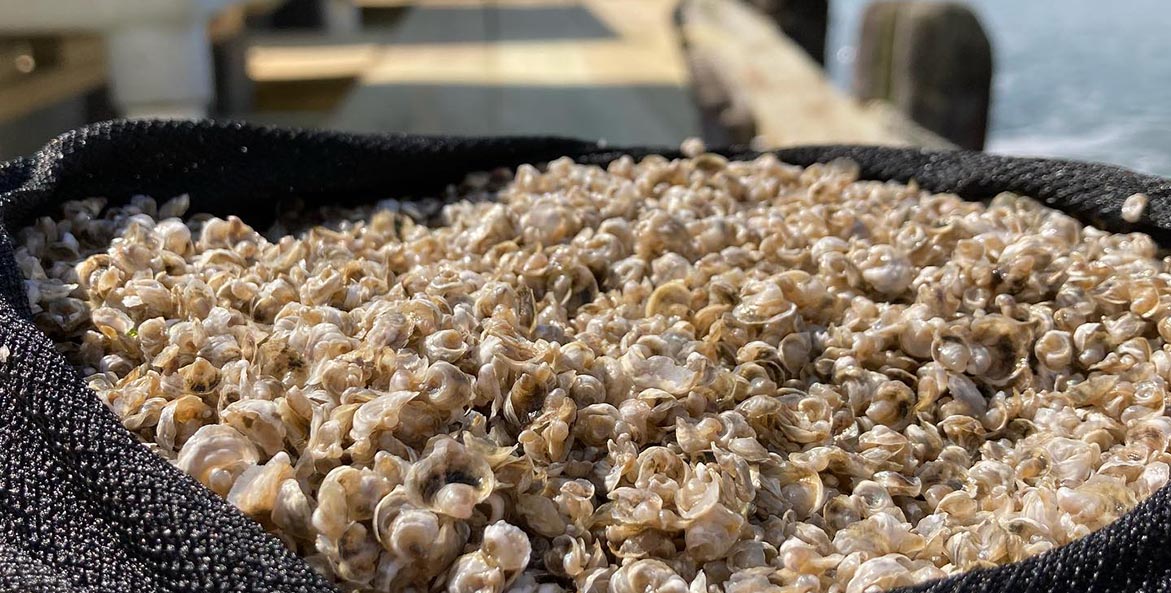Oyster Seed Holdings, Inc, an independent commercial hatchery and partner of the Chesapeake Oyster Alliance, is spreading the word on shellfish aquaculture in a unique way: immersive oyster hatchery tours.
Owner of Oyster Seed Holdings, Michael Congrove, explains that their goal is simple.
"We want more people to be eating oysters," he says.
Historically, oysters were abundant in the Chesapeake Bay and the oyster-harvesting industry boomed. The story is not the same today, as decades of overharvesting, pollution, and disease have contributed to a massive decline of oyster populations in the Bay. To remedy the current low levels of oysters in the Bay, CBF founded the Chesapeake Oyster Alliance in 2018, a coalition of more than 80 partner organizations, businesses, and academic institutions committed to adding 10 billion new oysters to Maryland and Virginia waters by 2025.
Like Oyster Seed Holdings, the Chesapeake Oyster Alliance wants more people to be eating oysters, and is working tirelessly to increase oyster aquaculture, improve science-based fishery management, and restore oyster sanctuaries throughout the watershed.
But why is oyster farming so important?
Oyster farming can have a net positive impact on the environment. This is because oysters are natural filters; an adult oyster can filter up to 50 gallons of water a day. More oyster farms mean more oysters are continually added to the Bay's waters. Oyster Seed Holdings, which supplies over 100 million baby 'seed' oysters to shellfish farmers along the East Coast, wants to help educate the public about the benefits shellfish aquaculture can bring to the environment.
"We want to leverage our hatchery and the immersive experience from a tour here to double down on our belief that there should be more farm-based shellfish out in the world," says Congrove.
From Memorial Day to Labor Day in 2022, Oyster Seed Holdings, located in Gwynn Island, Virginia, will be hosting exclusive oyster pop-up bars. This waterside experience will include oyster tastings and an in-depth tour of their hatchery, featuring microscopic videos of oyster larvae along with microscopes set up throughout the hatchery where the public can peer into and witness oyster larvae growing in real time.
To support this project, the Chesapeake Oyster Alliance, in partnership with the Chesapeake Bay Trust, awarded Oyster Seed Holdings a Chesapeake Oyster Innovation Award. Supported by CBF, this program aims to increase knowledge about the value of oysters, oyster fisheries, and aquaculture efforts. Congrove says the Alliance gave them not only the funding, but the push to go forward with their project. He hopes their hatchery tours will do the same for others.
"Our goal is to change as many minds as we can. An experience like this might be able to change the mind of somebody who is on the fence about shellfish aquaculture," says Congrove.
Aside from encouraging the public to come down to a hatchery tour and eat some oysters, Congrove says there are other ways to get involved with shellfish aquaculture. They include visiting your local sea grant extension offices, or finding out if your community has oyster gardening programs, like CBF's Maryland and Virginia programs.
Congrove also encourages community dialogue.
"Let's talk about it. We understand that this is different, and people might have apprehension, but let's work together," he says. "We want to ensure people really have a good understanding of what their concerns are, so we can be good stewards of shellfish aquaculture."
Learn more about the Chesapeake Oyster Alliance and how you can help add 10 billion oysters to the Bay. Follow us on Instagram and Facebook.




